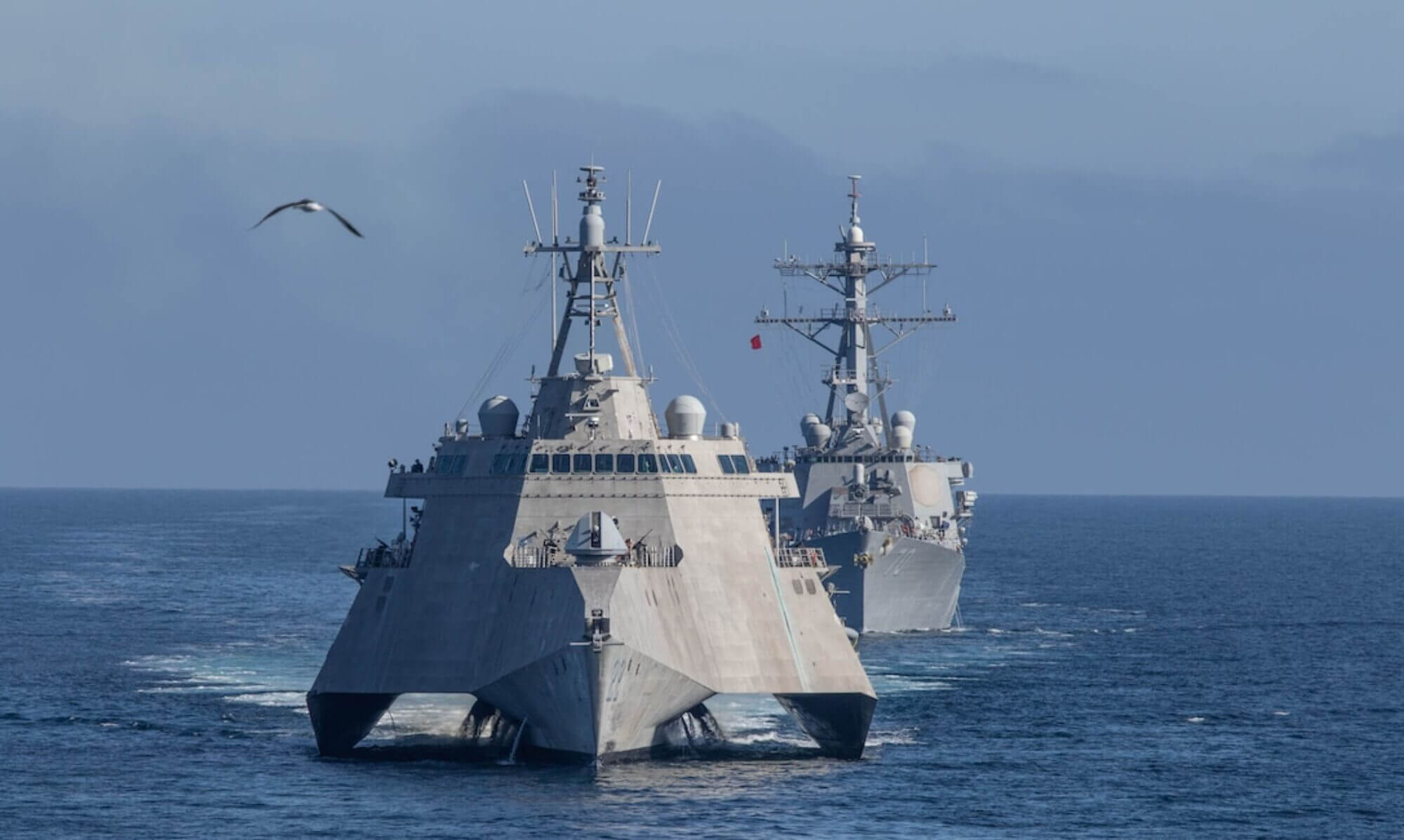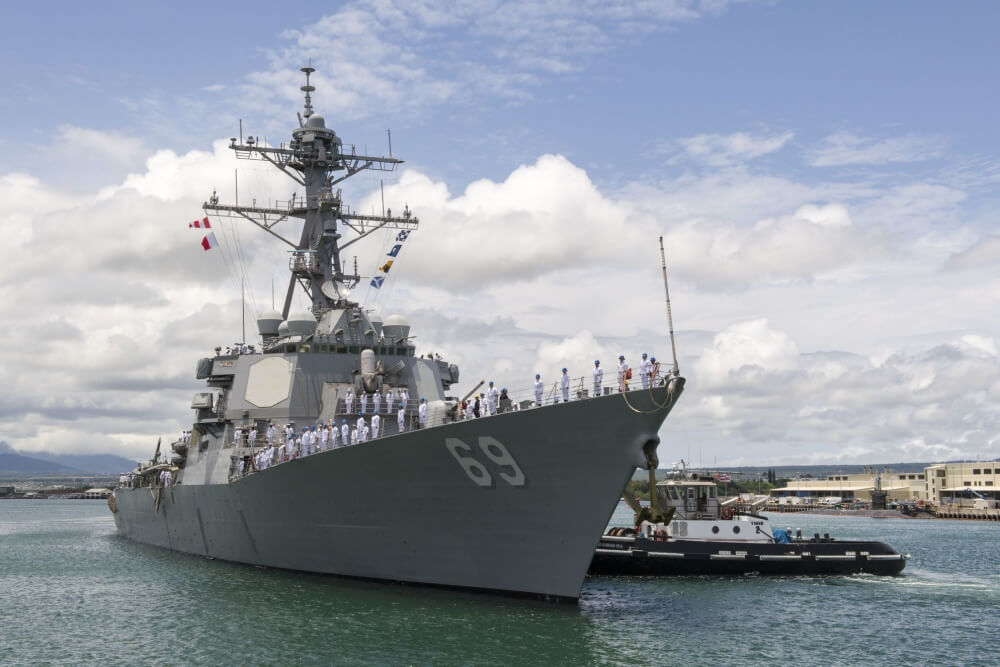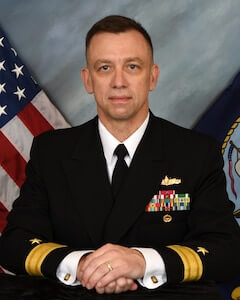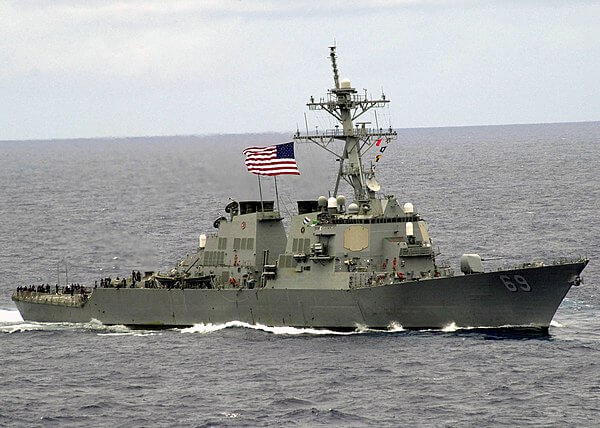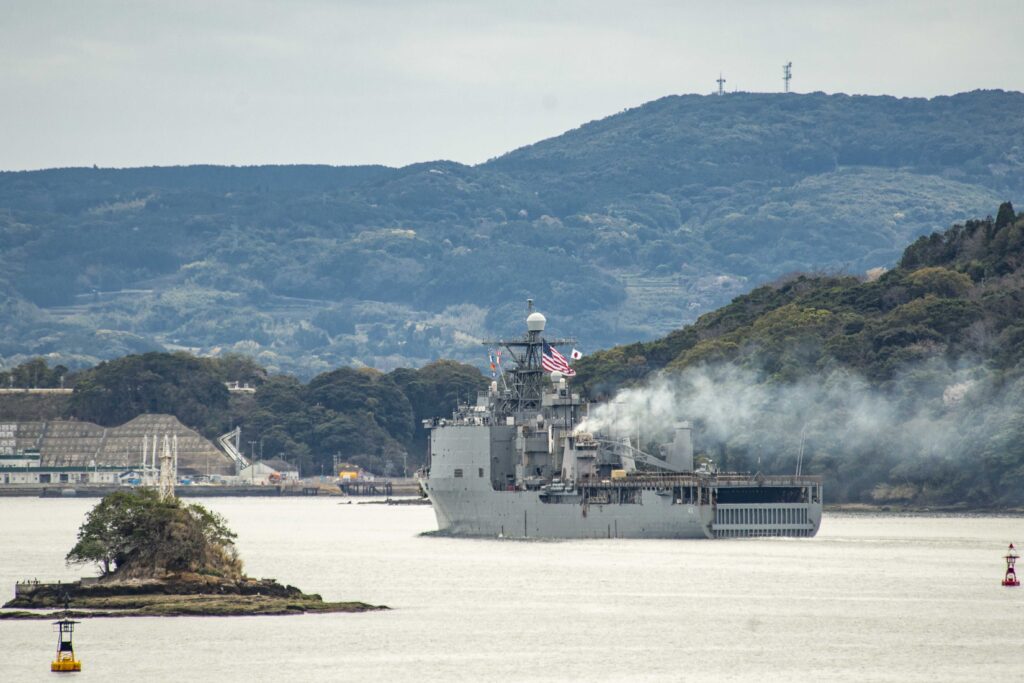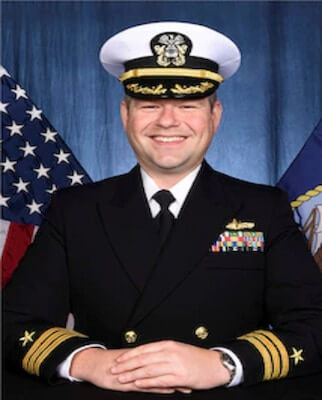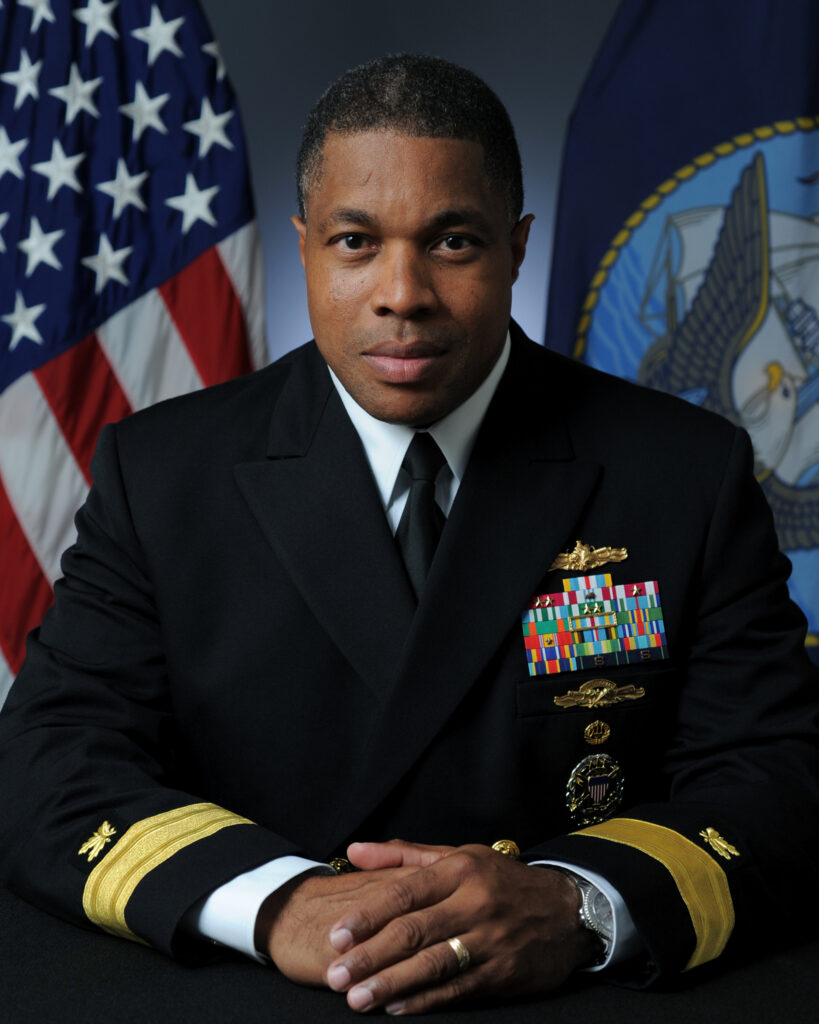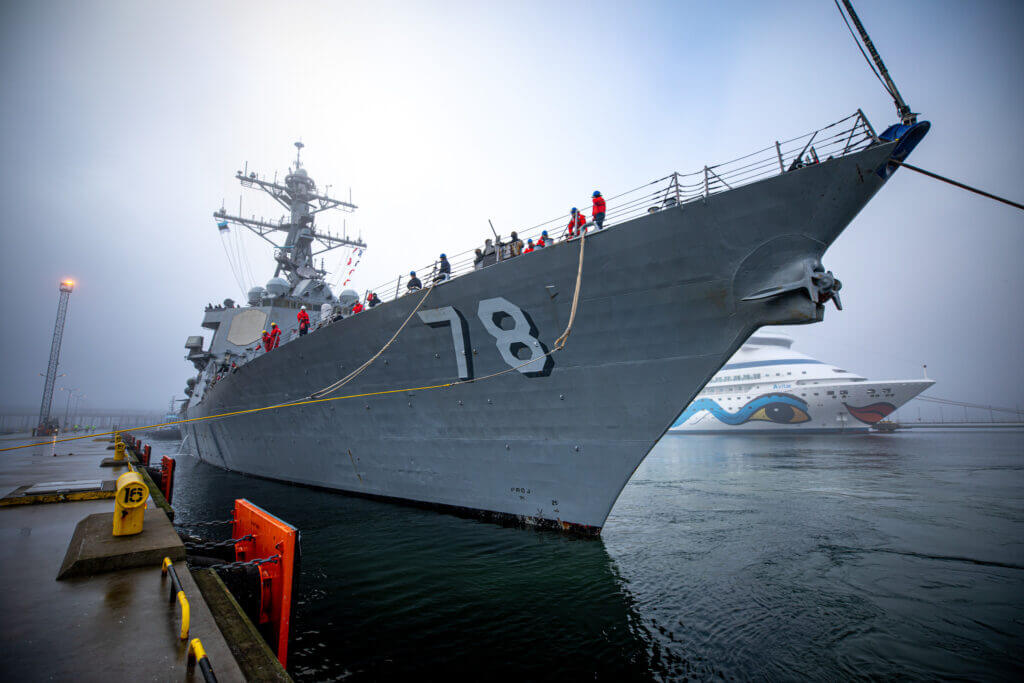
The Arleigh Burke-class guided-missile destroyer USS Porter (DDG 78) arrived in Tallinn, Estonia, March 20, 2023 for a scheduled port visit to enhance U.S.-Estonia relations as the two nations work together for a stable, secure, and prosperous Europe.
The ship’s presence in the Baltic Sea is a demonstration of the U.S. Navy’s continued commitment to collective defense of the European region and reinforces the strong bond between the United States and Estonia.
While inport Tallinn, the ship and her crew will have the opportunity to partake in several Morale, Welfare and Recreation tours and see many historical sights and experience the rich culture of Estonia and its citizens.
“We’re grateful for the chance to see Estonia and to enhance our relationship with a key NATO ally,” said Cmdr. Joe Hamilton, Porter’s commanding officer. “This is a great opportunity for our crew to experience Estonian culture and meet the people of Tallinn.”
The ship has conducted previous port stops in Funchal, Portugal and Rostock, Germany while on its current deployment.
Porter’s deployment to the NAVEUR-NAVAF area of operations comes months after a homeport shift from Naval Station Rota, Spain to Naval Station Norfolk in October 2022. Porter spent seven years in Spain as part of the Forward Deployed Naval Forces-Europe force, conducting eleven patrols in that time period. The patrols took Porter throughout the U.S. Sixth Fleet area of operations, including the Baltic, North, Norwegian, and Mediterranean Seas, as well as the Eastern Atlantic Ocean, in support of U.S., allied, and partner interests.
“Porter’s crew has performed superbly since our return to the region for this deployment,” said Hamilton. “We’ve learned and enjoyed our training with our allied and partner Navies. We are looking forward to this interoperability training with the Estonian Navy.”
The ship’s visit to Tallinn follows multiple port calls from U.S. Navy ships in recent years, including the Wasp-class amphibious assault ship USS Kearsarge (LHD 3) in May 2022 and guided-missile destroyers on deployment from the United States East Coast and on patrol from the Forward Deployed Naval Forces-Europe (FDNF-E) force stationed at Naval Station Rota, Spain.
The U.S. and Estonia are committed to working together and improving interoperability through port visits, operations, and exercises like Siil and Baltic Operations (BALTOPS).
For over 80 years, U.S. Naval Forces Europe-U.S. Naval Forces Africa (NAVEUR-NAVAF) has forged strategic relationships with our allies and partners, leveraging a foundation of shared values to preserve security and stability.
Headquartered in Naples, Italy, NAVEUR-NAVAF operates U.S. naval forces in the U.S. European Command (USEUCOM) and U.S. Africa Command (USAFRICOM) areas of responsibility. U.S. Sixth Fleet is permanently assigned to NAVEUR-NAVAF, and employs maritime forces through the full spectrum of joint and naval operations.
History
lUSS Porter is the fifth ship to bear the name of two naval legends: Commodore David Porter (1780-1843) and his son, Admiral David Dixon Porter (1813-1891). Their legendary naval exploits earned them a place of honor iNaval History.
Commissioned on February 20, 1897 in Newport, RI, USS Porter (TB-6) was a torpedo patrol boat that helped enforce the blockade of Cuba during the Spanish-American War. When the United States declared war on Spain, Porter was ready patrolling the waters of Key West. She soon made contact with the enemy by capturing two Spanish schooners. TB-6 resumed blockade duty off Cape Haiteien, Haiti, keeping a watchful eye out for the Spanish squadron. She participated in the three-hour bombardment of San Juan in May 1898 with the 9 ships of Rear Admiral W. T. Sampson’s fleet. During the attack, Porter maintained a close position under the batteries but was not hit. Later, she supported the Marine beachhead landing at Guantanamo Bay. The first USS Porter (TB-6) was struck from the Navy List on November 6, 1912.
USS Porter (DD-59) was commissioned April 17, 1916 in Philadelphia, Pennsylvania. After shakedown in the Caribbean, USS Porter (DD-59) sailed in convoy duty escorting the first USS troops to Europe during WWI. She arrived at Queenstown, Ireland, where she was based during World War I, meeting and escorting convoys from the U.S. as they transited from Ireland to France. Kept busy as a convoy escort, she severely damaged U-108 on April 28, 1918. The second USS Porter (DD-59) was struck from the Navy List July 5, 1934.
The third USS Porter (DD-356) was also commissioned in Philadelphia on August 25, 1936. After shakedown in waters off northern Europe, DD-356 visited St. Johns, Newfoundland for coronation with the Pacific Fleet. On December 5, 1941, Porter got underway from Pearl Harbor, escaping the Japanese attack by two days. She vigorously patrolled with cruisers and destroyers in Hawaiian waters. In late October 1942 Task Force 16 exchanged air attacks with strong Japanese forces northeast of Guadalcanal in the Battle of the Santa Cruz Islands. During the ensuing action, Porter was torpedoed by a submarine and her crew was forced to abandoned ship. Her name was struck from the Navy List November 2, 1942. For her valiant service in WWII, USS Porter (DD-356) earned on battle star for World War II service which is represented by a star on the DDG 78 crest.
The fourth Porter (DD-800) was commissioned June 24, 1944 in Seattle, Washington. After shakedown off San Diego, Porter trained with Task Force 92 and made an offensive sweep against the Japanese naval base at Suribachi Wan, Paramushiru. Porter participated in the first extensive sweep by surface vessels into the Japanese-controlled Sea of Okhotsk. In doing so, DD-800 encountered a small convoy and sank a 2,000-ton Japanese merchantman with gunfire. During the Korean conflict, USS Porter (DD-800) served in Korean waters with Task Force 95 and joined the ranks of the “Trainbusters Club,” destroying one North Korean train and damaging 2. She was placed out of commission on August 10, 1953. Porter earned one battle star for World War II service and one battle star for Korean War service. These are represented on the DDG 78 crest
